How neutron imaging uncovers hidden secrets of fossils and artifacts
Shattered crocodile. Formally, Confractosuchus. It was discovered in Australia when a bulldozer clearing a boulder broke a stone into pieces. Exposed portions of the broken-up rock made clear that fossils were inside, but there was no immediate sign that this discovery would later reveal an unprecedented snapshot of life from the Cretaceous Period.
Paleontologist Matt White of the University of New England in Armidale, Australia, and colleagues arranged to have the fossil-laden rock scanned with X-ray computed tomography. Like a medical CT scan, the method takes multiple images of an object that can be assembled into a 3-D map of the interior. The team hoped to use the scans as guides to isolate individual bones in the fossil without removing them, then manipulate the 3-D images to virtually put the shattered croc back together.
But one section of the fossil puzzle gave them trouble. Iron-rich stone surrounding the bones made it difficult to get good X-ray images. So the researchers decided to try another approach.
They sent the mystery chunk to chemist Joseph Bevitt of the Australian Centre for Neutron Scattering in Sydney, who specializes in using subatomic neutron particles to image ancient objects. Along with the expected croc bones, Bevitt discovered one that looked like a dinosaur leg bone. It was in the portion of rock where the crocodile’s stomach cavity would have been.
“When I saw the neutron result and the little dino femur, I was shaking with shock,” Bevitt says, “both in awe and doubt with what we had seen.”
Years of analysis plus more X-ray and neutron scanning eventually confirmed that the remains of a previously unknown species of dinosaur, bitten into chunks and scored with tooth marks, were in the croc’s belly. The finding earned the shattered crocodile the second half of its name: sauroktonos, for lizard killer. White, Bevitt and colleagues published their discovery of both the newly identified species of crocodile and the never-before-seen dinosaur inside last year in Gondwana Research (SN: 3/26/22, p. 5).
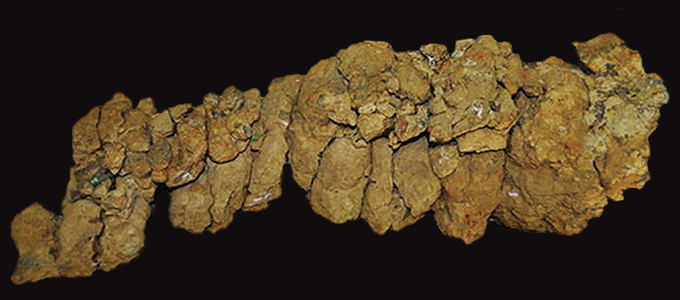
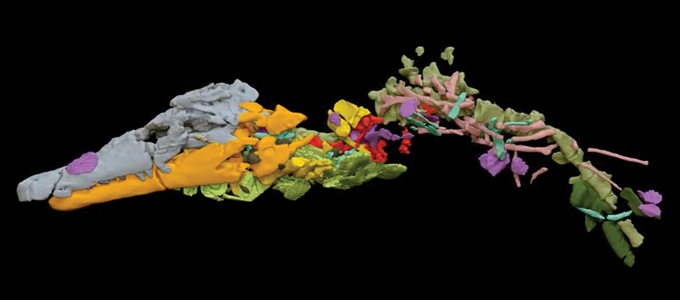
It’s a stunning discovery: Confractosuchus sauroktonos, the shattered crocodile lizard killer, and the remains of its last meal, its dinosaur victim, frozen in stone 100 million years ago. It’s a vignette that may never have come to light if not for neutron tomography. Although neutrons have been used for imaging in industrial and military applications since shortly after the neutron was discovered in 1932, it’s only in the last few decades that these subatomic particles have begun to provide scientists with unprecedented views inside fossils and antiquities.
Look, don’t touch
There was a time when studying fossils and artifacts often meant damaging or destroying them. Mummified remains were dissected. Sealed containers were cracked open. Fossils were pried loose from rock. In some cases, fossil-containing samples were ground down, layer by layer, to create images of sequential portions in slices that revealed the fossilized structures inside.
Fortunately, X-rays offer nondestructive insights. As a high-energy form of electromagnetic radiation, or light, X-rays interact with the electric and magnetic fields associated with electrically charged particles. In a doctor’s office, when a technician shines a beam of X-rays at a broken leg, the light gets scattered or absorbed by the fields of the electrons around atoms in the leg. The denser a material is, the more electrons are packed in it, and the less effectively X-rays can pass through. That’s why higher-density portions of the body — like bones — stand out in X-ray images more than lower-density portions. Skin, muscle and other soft tissues are essentially invisible because X-rays pass straight through.
X-rays have provided views into the hidden interiors of artifacts since the radiation was discovered in 1895. But after computationally intensive X-ray CT was developed in the 1970s, it became the standard approach to studying objects in paleontology and archaeology (SN: 12/18/21 & 1/1/22, p. 44). X-ray CT scanning is now the modern-day alternative to the grinding that 19th century scientists often relied on. Recent examples include scans of mummified animals from ancient Egypt (SN: 9/12/20, p. 17); newly uncovered inscriptions on the 2,000-year-old Antikythera mechanism, an ancient Greek astronomical calculator used to predict eclipses and other celestial events (SN: 12/2/06, p. 357); and a study of the brain cavity in a 20-million-year-old monkey skull (SN: 9/14/19, p. 11). Many large museums and research institutions have their own X-ray CT scanners on hand that are essentially the same systems that doctors use.
For all that X-ray imaging has revealed about the past, though, it still has some drawbacks. X-rays can’t penetrate a particularly dense material, like lead or thick layers of other metals, to see an object hidden inside. On the flip side, an object made of low-density material, such as soft tissue, will be invisible to X-rays.
Neutrons can fill in the picture.

The difference is in the scattering
Neutrons, as their name implies, are neutral. These subatomic particles have no electric charge, so neutron beams don’t notice the electrons in orbit around atoms. Instead, neutrons pass right by electrons and hit nuclei packed with protons and neutrons at the centers of atoms. Incoming neutrons can bounce off an atom’s nucleus or be absorbed into the atom. The interactions are more complicated than with X-rays and depend on how fast the neutrons are moving and on complex quantum mechanical interactions.
Neutrons suitable for tomography are produced with comparatively massive particle accelerators or as by-products from nuclear reactors. The neutrons are relatively slow moving, with energies one-hundred-millionth those of X-rays in CT scanners. These slow neutrons interact strongly with some low-density materials that X-rays pass through blithely, including lithium, boron and hydrogen.
“Water to neutrons is like lead for X-rays,” because of the hydrogen atoms, Bevitt says. Too much hydrogen-rich material can hide details from neutron beams. But in the same way that a metal hip joint stands out in a medical X-ray, hydrogen can also make some features visible in neutron images. Lead, iron and copper, on the other hand, are essentially transparent to low-energy neutrons.
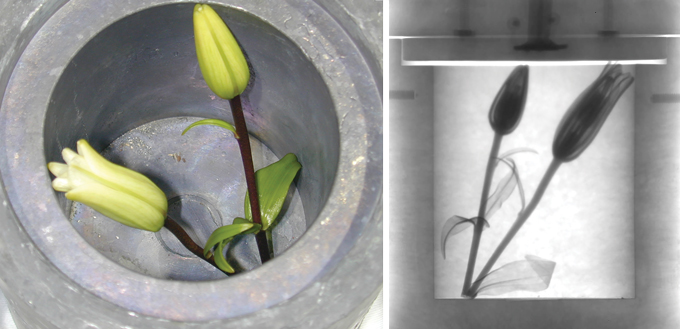
Physicist Jacob LaManna of the National Institute of Standards and Technology in Gaithersburg, Md., likes to demonstrate the comparative capabilities of neutron and X-ray imaging with a CT “still life” of Asiatic lilies tucked inside a hollow cask with thick lead walls. “The neutrons can go right through the lead, and then you can see basically all the water [in the] vascular structure of the flowers,” LaManna says. An X-ray scan would show nothing but the opaque outer surface of the cask.
The ability to glide through dense materials that block X-rays has made neutron imaging an important technology for industrial testing of automobiles and planes. The particles can reveal the flow of hydrogen-rich oil inside engine blocks or expose flaws in metal castings. Since the 1970s, U.S. national laboratories have relied on neutron imaging to develop and maintain the nation’s nuclear weapons stockpiles; the neutrons are powerful quality-control tools for mapping out the insides of dense bomb parts and for studying hydrogen-rich fusion explosives inside warhead components.
At NIST, LaManna leads the Neutron and X-ray Tomography, or NeXT, facility, which can simultaneously run X-ray and neutron imaging. The dual views provide distinct yet complementary information about things that contain combinations of materials — like hydrogen fuel cells, building materials and soil samples — that would be difficult to study with only one or the other imaging approach.
Over the last couple decades, as word has spread about the capabilities, a growing number of paleontologists, archaeologists and anthropologists have added neutron imaging to their analytical toolboxes. Despite neutron imaging being around for a while, “we are really the new kids on the block,” Bevitt says.
In addition to revealing multiple dinosaur bones in the belly of a shattered crocodile, along with the femur that initially caught Bevitt’s eye, neutron computed tomography has allowed researchers to study the fabric swaddling cat mummies without unwrapping them, find signs of recently applied glues holding together fraudulently assembled artifacts, and uncover the most ancient vertebrate heart ever found, in a 380-million-year-old fish.
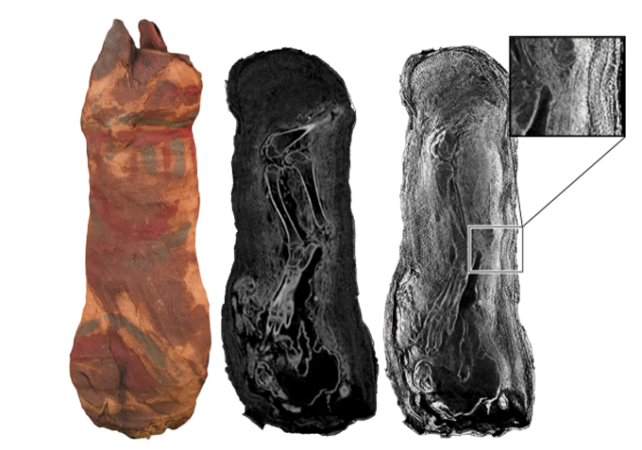
Rewards and risks
Paleontologist James Clark places a pair of fossilized crocodile skulls on the table in his basement lab at George Washington University in Washington, D.C. The 165-million-year-old fossils are dwarfed by a nearby modern alligator skull. While the alligator skull is about as long as my forearm, the fossilized croc skulls are only slightly bigger than my thumb tip.
The fragile skulls, which Clark collected in Mexico four decades ago, are embedded in hardened blobs of sediment with just a few bones and teeth peeking through. At first glance, the specimens resemble wads of chewed gum, but made of gritty, iron-rich mudstone. “If you try to X-ray that, you basically end up with … these bright sparkles from all the iron,” Clark says. The result is blurring and streaking that hide the skeletal structures.
Clark could have hired preparers to clean away the sediment surrounding the delicate bones. But it’s a slow and expensive process that can end up damaging the specimen, he says.
It wasn’t until 2019 that he finally got a good look at the hidden bones. After a seminar where he met Bevitt, Clark realized that neutron scanning could be the answer. The event led to an introduction to LaManna and the NIST facility 25 kilometers up the road in Maryland.
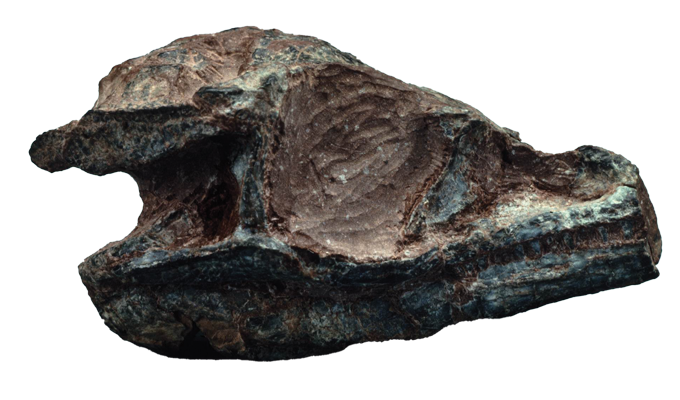
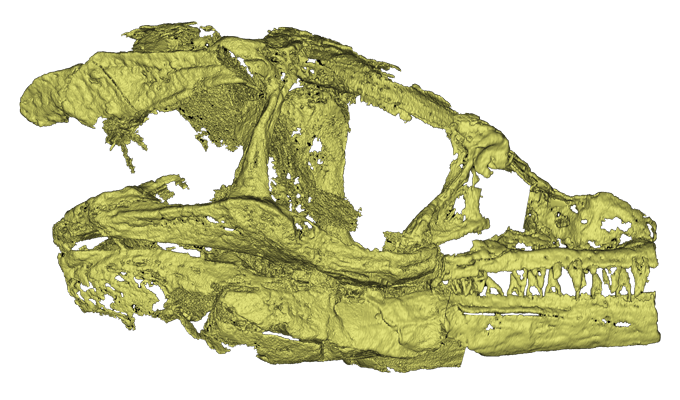
Because iron is essentially transparent to neutrons, LaManna says, “it’s much easier to basically isolate just the fossil portion of the object.” Images from the NIST neutron CT scans revealed the intricate details of the tiny bones. “You can then start playing digital jigsaw puzzles with the bone fragments to try to reconstruct the particular creature.”
While the material around a fossil or object may present a problem for X-rays, sometimes it’s the object itself that’s the issue. Tissues, fibers, wood and other low-density materials can be difficult to resolve with X-rays, and metals within an object can block other features from view. Both challenges plague researchers studying antiquities like the 3,000-year-old dagger-axes that I saw on display in the Smithsonian’s Freer Gallery of Art in Washington, D.C.
These ceremonial weapons from China’s Shang dynasty are suspended in a vertical glass case, where I could get my nose just a few centimeters from the jade blades and turquoise-encrusted bronze handles. I found it was best to lean up close so that I could appreciate the intricate blue-green patterns of gemstones sunk into the metal.
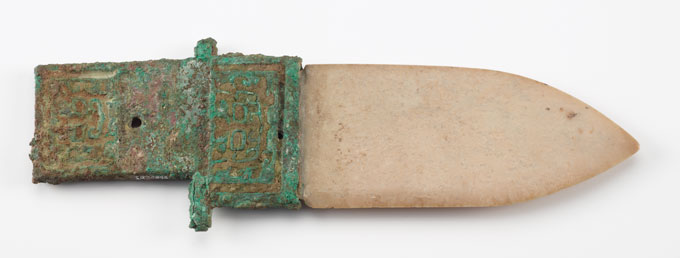
Smithsonian art conservator Ariel O’Connor would love to know how the dagger-axes were put together. X-ray CT doesn’t work on the combination of stone, metal, fibers and other materials that may be within. Neutron imaging could help, but it comes with a risk. Neutron beams make things radioactive. It’s not always clear in advance how radioactive a sample will become, but materials often exceed the level of radioactivity that’s safe for humans to handle, or even view in a museum, for days to weeks after exposure to neutron beams.
“We could actually do calculations and determine what’s going to be the problematic element and how long would it be radioactive and how much,” LaManna says. “[But,] in the case of the jade, where it’s material basically just completely dug up from the ground, it can have all sorts of stuff in it that you might not necessarily expect.” That makes residual radioactivity difficult to predict.
So, O’Connor decided to do a test. She and colleagues made a crude replica of an ancient dagger-ax. They used jade from Wyoming in lieu of the ancient Chinese jade, stacks of brass from a repurposed door kickplate to simulate the bronze handle, and some silk thread similar to the type that holds some Shang dynasty dagger-axes together. Then LaManna scanned the dagger with X-rays and neutrons at NIST.
As expected, the brass was entirely opaque to the X-rays, hiding features of the replica’s construction. But the neutron beam revealed key details, including a view of the jade inserted inside the brass handle and even individual silk threads.
As for residual radioactivity, the replica showed none of any significance nine days later. In general, Bevitt says, residual radiation dies down quickly. One fossil he studied remained radioactive for three months, due to the presence of radium, but most samples are safe to send back to labs and museums within a few weeks or less.
Still, with that uncertainty and questions about how chemically similar the replica is to the real dagger-axes, O’Connor is not yet ready to risk scanning the artifacts.
“As a conservator, I am entrusted with the preservation and safety of these remarkable 3,000-year-old objects to ensure they remain for future generations. If an analytical technique such as neutron imaging might answer our research questions but would alter the objects and prevent them from being accessible” due to induced radioactivity, O’Connor says, “we will look for other options.”
Opening a new window to the past
Despite the increasing popularity of neutron tomography for studying fossils and antiquities, X-ray CT remains the go-to imaging choice for most researchers. In the 1990s, a few dozen scholarly papers on using neutrons to study the past were published annually; recently, it’s been hundreds per year. Publications related to imaging fossils and artifacts with X-ray CT, though, number in the thousands every year.
Most of the time, X-rays suffice, and the advantages are clear. They offer high resolution to uncover small details with no lingering radioactivity. X-ray CT machines are also widely available because they’ve been used in medical settings for over 50 years, and they’re small enough to fit in most labs and museum research spaces.
At the moment, there are only a few dozen neutron tomography facilities on the planet. The particle accelerators and nuclear reactors that produce suitable neutrons are large, expensive and heavily regulated. Only a handful of the facilities worldwide are available to analyze fossils and antiquities, according to Burkhard Schillinger, a physicist at the Technical University Munich who runs the neutron imaging beamline there. He ticks off a few facilities in the United States, a half dozen in Europe and one in Australia.
Still, LaManna says the lack of access doesn’t seem to be the bottleneck in widespread adoption of the technique. Along with the concerns over lingering radioactivity, the novelty of the technology and general lack of awareness may stand in the way.
“I try to recruit as broad a range of users as I can” to submit fossils and antiquities for imaging at NIST, LaManna says. “It’s not like they’re getting pushed out of the way” to make space for more conventional neutron studies. “It’s just more of getting the correct people interested to then write proposals, come to us [and] work with us to get beam time.”
In the last decade, Australia-based Bevitt has spread the word on neutron tomography through lectures and outreach around the world. Most of the experts contacted for this story trace their initial interest in neutron imaging to Bevitt’s influence. Many researchers in his home country have already embraced the technology.
“Basically, in Australia, when a new dinosaur is discovered,” Bevitt says, “the first thing that happens is it comes to our lab.”
For all the latest Technology News Click Here
For the latest news and updates, follow us on Google News.
